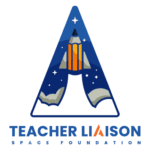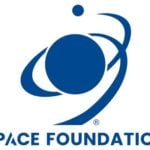Education
Teachers Benefit from Hands-on Technology Lessons
Written by: developer
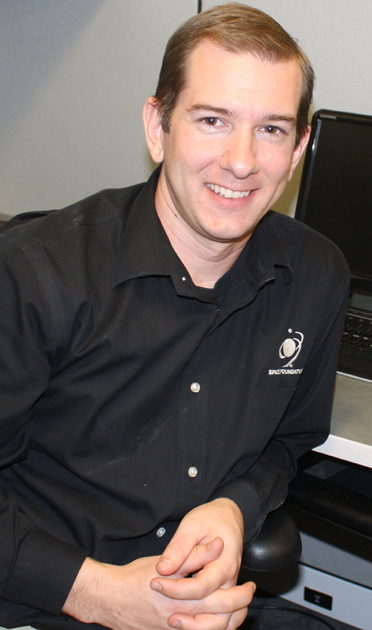 By Elias Molen, Space Education Specialist
By Elias Molen, Space Education Specialist
During the hot summer months along the East Coast, 60 teachers from Charles County (Md.) Public Schools expanded their expertise in space technology through Space Foundation professional development courses.
Every summer for the past nine years, the Space Foundation’s education team has traveled to Charles County to deliver Space Across the Curriculum courses to educators in Charles County. These graduate-level courses give these PreK-12 educators hands-on, space-themed lessons and activities that span the curriculum and are instantly transferrable to the classroom.
The location this year was a beautiful new school in Waldorf, Md., at St. Charles High School. The school incorporates the new James E. Richmond Science Center, containing a huge planetarium and the first Science On a Sphere® to be located in a high school.
I was one of the team of four Space Foundation educators who taught four space-themed courses over a two-week span. This year, our primary focus was on incorporating new ways of bringing technology into the classroom.
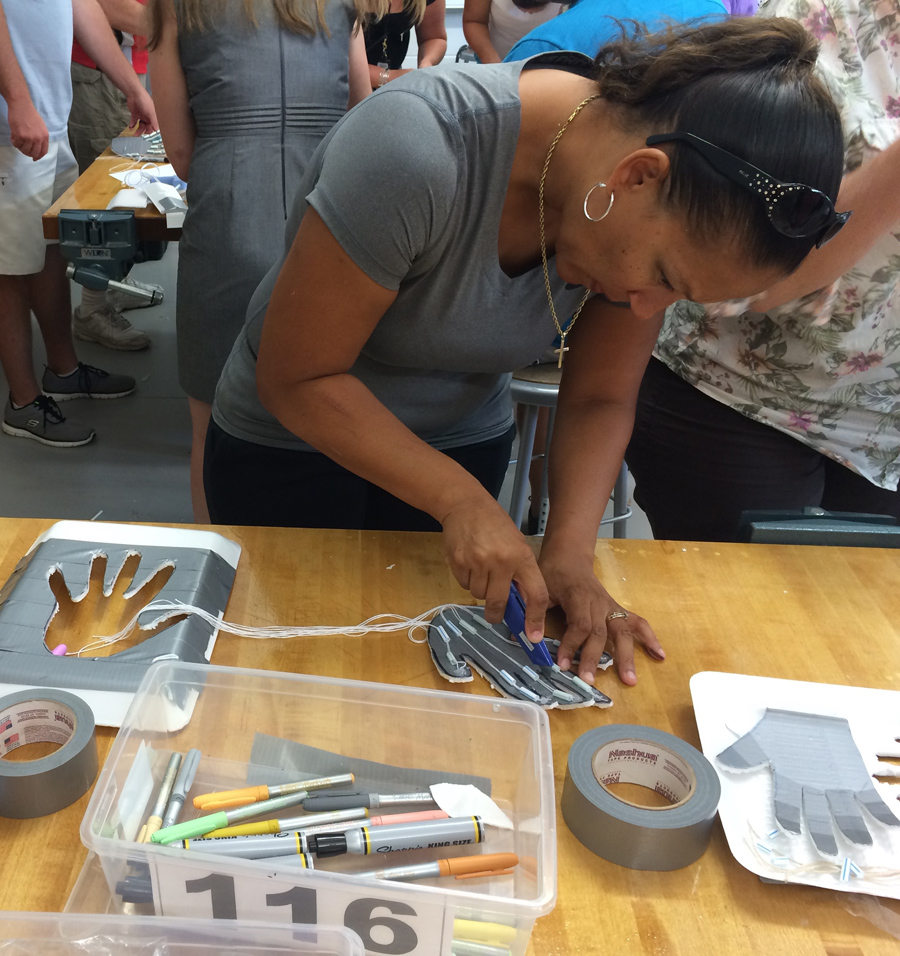 During the Meteorology and Space Weather course, teachers learned first-hand about a new satellite called the Global Precipitation Measurement Mission. They also learned how to create 3D models of hurricanes, and investigated the history and mapping of tropical storms. The teachers used infrared cameras, and learned how Science On a Sphere can be used as a teaching tool.
During the Meteorology and Space Weather course, teachers learned first-hand about a new satellite called the Global Precipitation Measurement Mission. They also learned how to create 3D models of hurricanes, and investigated the history and mapping of tropical storms. The teachers used infrared cameras, and learned how Science On a Sphere can be used as a teaching tool.
In the PreK-2 Early Childhood Space Exploration course, teachers learned how to integrate educational apps, art and science into their early elementary lessons. This technology theme was accentuated in the Space Technology for the Classroom course and the Kinesthetic Astronomy class.
A large part of the Space Technology class, and to some extent, the Astronomy course, gave teachers opportunities to learn about how space technology has impacted our daily lives. Through the Space Foundation’s Space Certification program, and with space products generously donated to the Space Foundation by our Space Certification partners, teachers were able to see first-hand examples of space products.
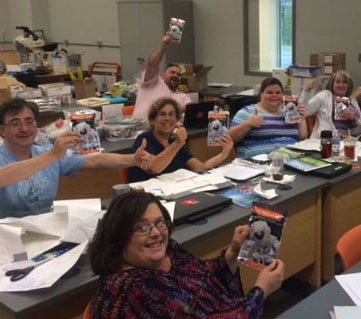 Astronaut Foods donated 50 packages of astronaut ice cream (pictured) for classroom use. Astronaut Ice Cream, and other freeze-dried products by Astronaut Foods, have been aboard space missions since the early Mercury days. The ice cream is not cold, but is preserved through freeze drying and dehydration.
Astronaut Foods donated 50 packages of astronaut ice cream (pictured) for classroom use. Astronaut Ice Cream, and other freeze-dried products by Astronaut Foods, have been aboard space missions since the early Mercury days. The ice cream is not cold, but is preserved through freeze drying and dehydration.
The teachers also tried out various polarized sunglasses (pictured), donated by Eagle Eyes Optics. The sunglasses use technology developed for space that blocks out harmful UVA, UVB and vision-destroying blue-light, and allows in selective vision-enhancing light rays.
The teachers were surprised to learn how many technologies have come from space research. We discussed in class how and why NASA cannot receive proprietor profits from the discoveries.
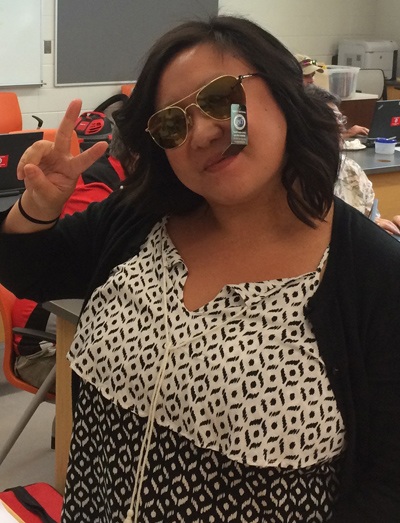 Overall, teachers were very interested in the technologies we presented. Their initial skepticism and trepidation about using new apps and technology in various projects soon turned into creative ideas and a deep desire to bring technology into their classrooms.
Overall, teachers were very interested in the technologies we presented. Their initial skepticism and trepidation about using new apps and technology in various projects soon turned into creative ideas and a deep desire to bring technology into their classrooms.
“I’m going to take the technology and try to give kids more opportunities — rather than me lecturing — give them opportunities to explore and find new things on their own and be able to put it together within the various types of media that we’ve learned this week.” –Matt Werner, Special Education Teacher.
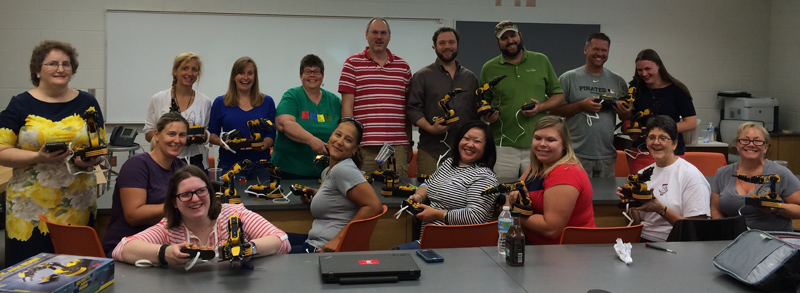
Normal
0
false
false
false
EN-US
X-NONE
X-NONE
/* Style Definitions */
table.MsoNormalTable
{mso-style-name:”Table Normal”;
mso-tstyle-rowband-size:0;
mso-tstyle-colband-size:0;
mso-style-noshow:yes;
mso-style-priority:99;
mso-style-qformat:yes;
mso-style-parent:””;
mso-padding-alt:0in 5.4pt 0in 5.4pt;
mso-para-margin:0in;
mso-para-margin-bottom:.0001pt;
mso-pagination:widow-orphan;
font-size:11.0pt;
font-family:”Calibri”,”sans-serif”;
mso-ascii-font-family:Calibri;
mso-ascii-theme-font:minor-latin;
mso-hansi-font-family:Calibri;
mso-hansi-theme-font:minor-latin;}
This article is part of Space Watch: September 2015 (Volume: 14, Issue: 9).

